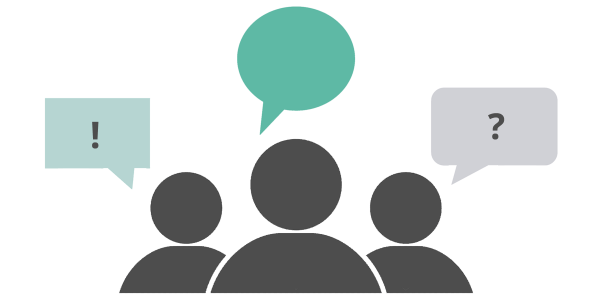I’m a big WordPress fan but, as with any software, sometimes things go wrong.
If you can afford a developer, no problem – they can troubleshoot for you. Perhaps an online search will provide answers. Or maybe you can just roll back to a recent backup.
But what if none of those are possible, and you need to try and find out what’s causing the problem by yourself?
Here’s my step-by-step guide to troubleshooting WordPress (for beginners).

1. Back up your site
With the amount I bang on about the importance of backups, this should be an obvious first step! Always back up before making any non-routine changes to your site.
How do I do this?
- Hopefully you already have a backup system in place, or maybe your web host takes regular backups for you.
- If not, try installing a backup plugin like UpdraftPlus (via Plugins > Add New), and follow the instructions.
2. Make sure that everything is up to date
Again, this should be a no-brainer. If the problem is caused by incorrect code, the developers may have already released an update to fix it, so make sure that WordPress core, all plugins and all themes are up to date.
It’s good practice to stay updated anyway. Updates often include feature improvements but, more importantly, they may contain security updates to protect your website and its visitors.
Of course, if the problem is preventing you from logging in to your website, you won’t be able to run any updates. See what to do if you can’t log in.
How do I do this?
- Go to Dashboard > Updates and click whatever update options are offered to you.
- Start by doing any theme updates, then update plugins. Leave any core WordPress updates until last. That way, you reduce the (already small) risk of anything breaking.
3. Create a staging copy of the site – or use maintenance mode
Troubleshooting is tricky. To track down the cause of a problem, you may need to deliberately turn off certain website features or make changes which would be visible to website visitors. Ideally, you won’t want to do this on your live website, so it’s better to work on a copy.
How do I do this?
- Depending on your hosting package, you may have a built-in staging area. Ask your web host about this.
- If not, you can create a copy of your site using a cloning plugin like Duplicator or All in One WP Migration. You can temporarily put the copy in a sub-folder of your main website, e.g. mywebsite.com/test/.
- When using cloning plugins, do read all the instructions carefully, and make sure you change the database ‘prefix’ so you don’t overwrite the data on your live site!
- As soon as you’ve installed the test copy of your site, go to Settings > Reading and tick the box which says ‘Discourage search engines from indexing this site’. It’s unlikely that search engines will stumble across your test site, but you’ll give yourself a real headache if they do, so it’s best to discourage them.
- Don’t forget that you’ll need to delete the test website (and its database) as soon as you’ve finished.
If making a staging copy sounds too scarily technical, try installing a maintenance plugin instead. This will hide your website from non logged-in visitors, but let you continue to see the website. Usually you can add a custom image and a message which your website visitors will see instead of the website.
This means that you can do your debugging without visibly ‘breaking’ your website.
How do I do this?
- Install and activate a maintenance plugin (via Plugins > Add New).
- Tip: If you want to double-check what your visitors are seeing while it’s activated, without having to log out and in again, try using a different internet browser.
4. Deactivate all plugins
This is where it starts getting interesting. A common cause of issues (like the infamous ‘white screen of death’) is a plugin glitch. The quickest way to find out if this is what’s happening in your case is to switch off all plugins. Obviously, this will break things on your website, which is why it’s best to do this on a staging copy if you can.
How do I do this?
- Go to Plugins > Installed Plugins. Take a note of any plugins which are inactive (since you won’t want to reactivate these – in fact, it’s probably a good idea to delete any inactive plugins, as they’re not doing anything useful!).
- Now look for the Bulk Actions dropdown menu and click the ‘Plugin’ checkbox just below it. This will select all plugins.
- Choose Deactivate from the Bulk Actions dropdown menu and click Apply. This will deactivate all your plugins.
If, after deactivating all plugins, the problem has gone away, there’s a good chance that the problem is due to a plugin. That’s a useful bit of information, but now you’ll need to identify which plugin, so go to step 5.
If that didn’t make a difference, it’s probably not a plugin issue. Skip to step 9.
5. Reactivate plugins individually
To work out which plugin is causing the problem, reactivate the plugins one at a time, checking each time whether the problem has recurred.
How do I do this?
- You should already be on the Installed Plugins page. To reactivate a plugin, simply click the ‘Activate’ link below its name.
- Note that sometimes you’ll need to activate plugins in a specific order (e.g. if you have WooCommerce extension plugins, you may need to activate WooCommerce itself first).
Sometimes you’ll find that after reactivating all the plugins, the problem still hasn’t recurred. This is the plugin equivalent of rebooting your computer. You may never know what the problem was, but never mind – it’s fixed! Skip the rest and pat yourself on the back for a job well done.
If you manage to narrow it down to one plugin, you’ll then need to check if it’s just a plugin issue, or a conflict between a plugin and your theme.
6. Re-install the plugin
If a plugin is the cause of the problem, it’s possible that one of the files has become corrupted. Try re-installing the plugin.
How do I do this?
- The best way is to upload the theme files directly to your website. Download the plugin files, then upload them to yoursite.com/wp-content/plugins/pluginname/, overwriting the existing files.
(Note that your WordPress files might be in a sub-folder, e.g yoursite.com/wordpress/wp-content/etc…) - Alternatively, if the plugin doesn’t have any important data associated with it, you can re-install it through the WordPress Dashboard:
- Go to Plugins > All Installed. Deactivate and then delete the problem plugin.
- Then go to Plugins > Add New and reinstall it. Sometimes it’ll remember your settings but in many cases you’ll have to set it up again from scratch.
7. Check the plugin support pages
It’s possible that you may not be the first person with this problem. Most plugins have FAQ and support pages or forums. Search these to see whether anyone else has already found a solution. Find the plugin’s homepage and look for a Support or Help link.
8. Consider replacing the plugin
Sometimes it’s not worth battling to work out the problem with a specific plugin. If there are alternative plugins which do the same job, ask yourself whether it might be easier to switch?
9. Try a default theme.
Switch to one of the WordPress default themes, e.g. twentyseventeen, with all plugins active. See if this fixes the problem.
How do I do this?
- Go to Appearance > Themes. You should see at least one of the ‘twentysomething’ themes, as the latest is added by default when you install WordPress. Click one of these then click Activate.
10. Re-install the theme.
If the problem goes away when you’re using a ‘twentysomething’ theme, then your theme is likely to be at least part of the problem.
If this is the case, try re-installing the theme, in case one of the theme files has become corrupted.
How do I do this?
- As with plugins, the best way to do this is to upload the theme files via FTP or your web control panel File Manager.
- Get a copy of the theme (it will usually be a zip file) and extract the files.
- Then upload them to yoursite.com/wp-content/themes/yourtheme/, overwriting the existing files. This should retain all your settings for the theme.
- Alternatively, you can do this through the WordPress Dashboard.
- You won’t be able to upload a theme with the same name, so you’ll need to delete your current theme first. To do this, go to Appearance > Themes and switch to a different theme.
- Now you can delete your theme by clicking on it and using the red ‘Delete’ link at the bottom right corner.
- Now re-upload your theme via Appearance > Themes > Add New, and activate it as described above.
- Note that you may need to re-create your theme settings, e.g. any customisations or logos that you’ve added, and set up Widgets and Menus for your theme again.
11. Contact the theme or plugin developer
If you’ve run through these steps and have a pretty good idea that the problem is caused by a particular theme or plugin, then now is the moment to get in touch with the developer and ask for their help.
Tell them as much as you can about what’s going wrong and what you’ve done in terms of troubleshooting. Be as specific as you can: outline what you think ought to happen, and what’s actually happening. If the problem only happens in certain browsers, or only on mobiles, make sure you tell them that too.
12. What to do if you can’t log in
This is a little trickier but don’t worry – in most cases you’ll be able to fix it by disabling your plugins folder. To do this, you’ll need access to your website files.
To access your files, you can use an FTP/SFTP client (like Filezilla or Cyberduck) or sometimes you can access the files directly via your website hosting control panel.
Once you can see the files, navigate to the ‘wp-content’ folder and look for a sub-folder called ‘plugins’.
Re-name this folder as ‘plugins1’.
Actually, it doesn’t matter what you call the folder. The important thing is that, because it’s no longer called ‘plugins’, WordPress will no longer be able to find any of your plugins – this means that they’ll all stop working!
In almost all cases, doing this will enable you to log in. If so, change the name of the plugins folder back to its original name ‘plugins’.
Your plugins will still be disabled, so you’ll need to activate them all again; it’s best to re-activate them one-by-one, as in step 4, to see which one is causing the problem. And of course, don’t forget to run any updates first.
Extra troubleshooting resources
If none of that helps, try these resources with hints for fixing common WordPress issues:
- 10 Common WordPress Errors and Problems (and Their Solutions)
- 25 Most Common WordPress Errors and How to Fix Them
- Common WordPress Errors and How to Fix Them
Good luck troubleshooting!


